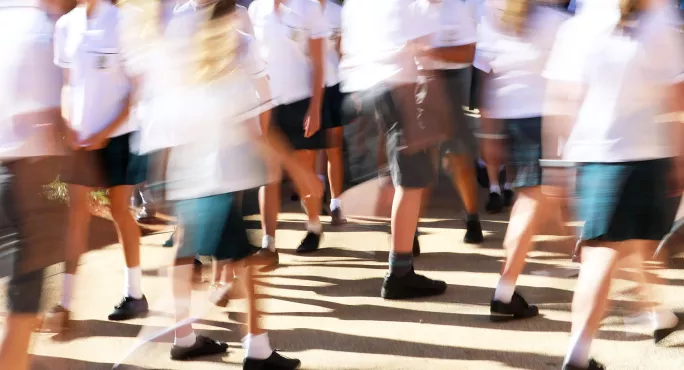Swapping Sats for GCSEs: what are the key leadership differences?
Share
Swapping Sats for GCSEs: what are the key leadership differences?
The overwhelming majority of teachers begin their careers in either primary or secondary, and then remain there until retirement.
But for Andrew Scott-Evans, headteacher of Becket Keys School in Brentwood, the move from primary to secondary headship has been an eye-opening experience, which has taught him more about teaching - and school leadership - than he ever expected.
So what exactly did he learn?
1. You have to learn how to communicate your vision on a larger scale
“As a primary headteacher you can pretty much directly line manage everyone in the team; this was something I always enjoyed, and I was able to drive the school through the force of my own personality,” says Scott-Evans.
However, he quickly came to realise that this approach would need to change when he took on leadership of a much bigger staff at his new secondary school.
“Leading a secondary school has required me to learn that I cannot fix everything myself, and I cannot rely on throwing my own time at things that are not working. You have to work through others, and you have to find more compelling ways to clearly communicate your values, ambitions and your strategy,” he explains.
Quick read: School leadership: trust has to come from the top
Quick listen: What you need to know about the problems with ‘school readiness’
Want to know more? How to transform your approach to middle leadership
2. You will be working just as hard no matter what side of the Sats you’re on
Scott-Evans left primary leadership looking forward to what he thought would be some of the perks of working in a secondary school.
“As a primary head, I worked long hours and many hours at the weekend. I did not have a personal assistant or a large leadership team helping me. I had a feeling that secondary teachers had it “easier” and would probably not work as long hours. I was wrong - secondary colleagues work really hard! They work even longer days than primary,” he says.
What is the cause of the longer hours? Exams have a lot to do with it, Scott-Evans believes.
“The pressure of public exams is quite rightly immense because it is not just school accountability that keeps teachers awake, it is the knowledge that these exams will change students’ lives for ever.”
3. You will find the challenge reignites your love for your job
Before moving to secondary, Scott-Evans worked in primary schools for 15 years. He was, he says, more than ready for a change.
“I think if I had not made the move to secondary, I might have changed career completely,” he says.
But the move allowed him to develop his career in a different way and opened the door to ongoing CPD opportunities.
“Before I took up the post, The Russell Education Trust trained me in secondary organisation and secondary curriculum; I was coached by experienced secondary heads, Ofsted inspectors and secondary subject advisers/examiners,” he says.
“Even now, every week, I am calling colleagues at the trust for guidance. I have been continually learning and I am delighted that I made the move to secondary. It was just what I needed.”
4. There is no need to call Year 7 ‘little ones’
Scott-Evans found that he was able to apply his experience of working in primary schools to developing a better understanding of Year 7 - and to pass this understanding on to his colleagues.
“I banned phrases like: ‘little ones’ and helped secondary colleagues to realise that these students had been at school for seven years and were not new to this.”
Instead, he encouraged staff to build on the work that pupils had been doing in primary, and made sure that the school’s curriculum reflected this.
“They did not need units called ‘Introduction to Geography’. These students were capable, confident learners ready to make a difference in the world,” Scott-Evans explains. “They were house captains, librarians, play leaders and monitors. There is no need to mollycoddle them.”
5. Just because you’ve scaled up, the small things still matter
Many primary headteachers pride themselves on knowing the names of all of the students in their school, but surely this is impossible at secondary? Scott-Evans doesn’t think so.
“People ask me, now we have nearly 1,000 students, how I remember them all. I do not know the answer to that. I guess once you learn a student’s name you do not usually forget it, do you? Some people have the ability to remember facts or jokes, but my memory locks their names in.”
However, it doesn’t stop at names: Scott-Evans explains that learning names is just step one in getting to know the students at his school.
“Next, I want to know about their strengths and areas for development. And then I want to make a difference for each one. I try to walk round the whole school every day and see every teacher and every student in every classroom. Talking to them, smiling at them, shaking their hand and making sure that they are having a good day is part of what I always did and what I always do. It is all about the students. It always has been,” he says.
Grainne Hallahan is senior content writer at Tes





